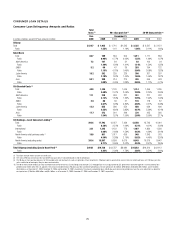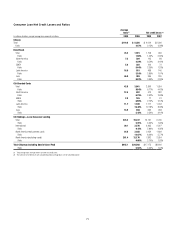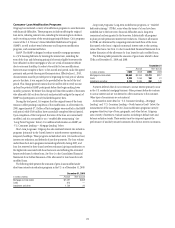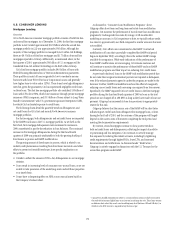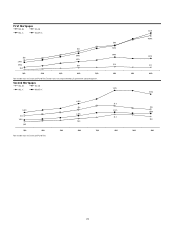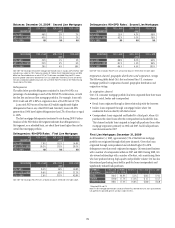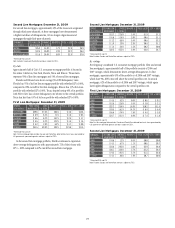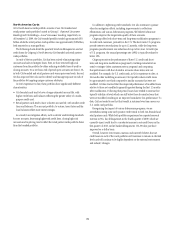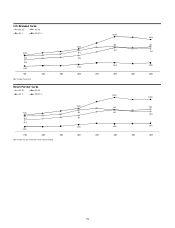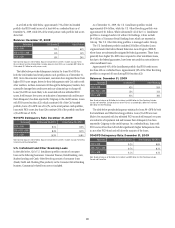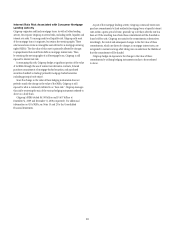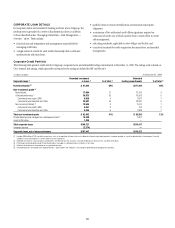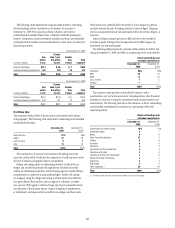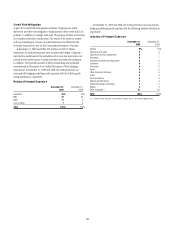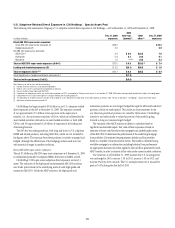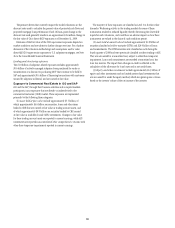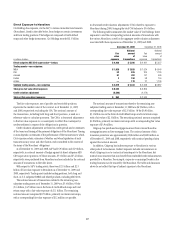Citibank 2009 Annual Report Download - page 88
Download and view the complete annual report
Please find page 88 of the 2009 Citibank annual report below. You can navigate through the pages in the report by either clicking on the pages listed below, or by using the keyword search tool below to find specific information within the annual report.78
North America Cards
Citi’s North America cards portfolio consists of our Citi-branded and
retail partner cards portfolios located in Citicorp—Regional Consumer
Banking and Citi Holdings—Local Consumer Lending, respectively. As
of December 31, 2009, the Citi-branded portfolio totaled approximately $83
billion while the retail partner cards portfolio was approximately $58 billion,
both reported on a managed basis.
The following charts detail the quarterly trends in delinquencies and net
credit losses for Citigroup’s North America Citi-branded and retail partner
cards portfolios.
In each of the two portfolios, Citi has been actively eliminating riskier
accounts and sales to mitigate losses. First, we have removed high-risk
customers from the portfolio by either reducing available lines of credit or
closing accounts. On a net basis, end of period open accounts are down 11%
in both Citi-branded and retail partner cards versus prior-year levels. Second,
Citi has improved the tools used to identify and manage exposure in each of
the portfolios by targeting unique customer attributes.
In Citi’s experience to date, these portfolios have significantly different
characteristics:
Citi-branded cards tend to have a longer estimated account life, with •
higher credit lines and balances reflecting the greater utility of a multi-
purpose credit card.
Retail partner cards tend to have a shorter account life, with smaller credit •
lines and balances. The account portfolio, by nature, turns faster and the
loan balances reflect more recent vintages.
As a result, loss mitigation efforts, such as stricter underwriting standards
for new accounts, decreasing higher-risk credit lines, closing high-risk
accounts and re-pricing, tend to affect the retail partner cards portfolio faster
than the branded portfolio.
In addition to tightening credit standards, Citi also continues to pursue
other loss mitigation efforts, including improvements in collections
effectiveness and various forbearance programs. We believe forbearance
programs improve the longer-term quality of these accounts.
Citigroup offers both short-term and long-term modification programs to
its credit card customers, primarily in the U.S. The short-term U.S. programs
provide interest rate reductions for up to 12 months, while the long-term
programs provide interest rate reductions for up to five years. In both types
of U.S. programs, the annual percentage rate (APR) is typically reduced to
below 10%.
Citigroup monitors the performance of these U.S. credit card short-
term and long-term modification programs by tracking cumulative loss
rates by vintages (when customers enter a program) and comparing
that performance with that of similar accounts whose terms were not
modified. For example, for U.S. credit cards, in Citi’s experience to date, at
24 months after modifying an account, Citi typically reduces credit losses
by approximately one-third compared to similar accounts that were not
modified. Citi has observed that this improved performance of modified loans
relative to those not modified is generally greatest during the first 12 months
after modification. Following that period, losses have tended to increase but
typically stabilize at levels which are still below those for similar loans that
were not modified, resulting in an improved cumulative loss performance. To
date, Citi has tended to see that this benefit is sustained over time across our
U.S. credit card portfolios.
Recognizing the impact of various forbearance programs, we are
nevertheless seeing some early positive credit trends in both Citi-branded and
retail partner cards. While both portfolios experienced an expected seasonal
increase in 90+ day delinquencies in the fourth quarter of 2009, which we
currently expect could lead to a moderate increase in net credit losses in the
first quarter of 2010, earlier bucket delinquencies (30–89 days past due)
improved on a dollar basis.
Overall, however, Citi remains cautious and currently believes that net
credit losses in each of the cards portfolios will continue to remain at elevated
levels and will continue to be highly dependent on the external environment
and industry changes.




